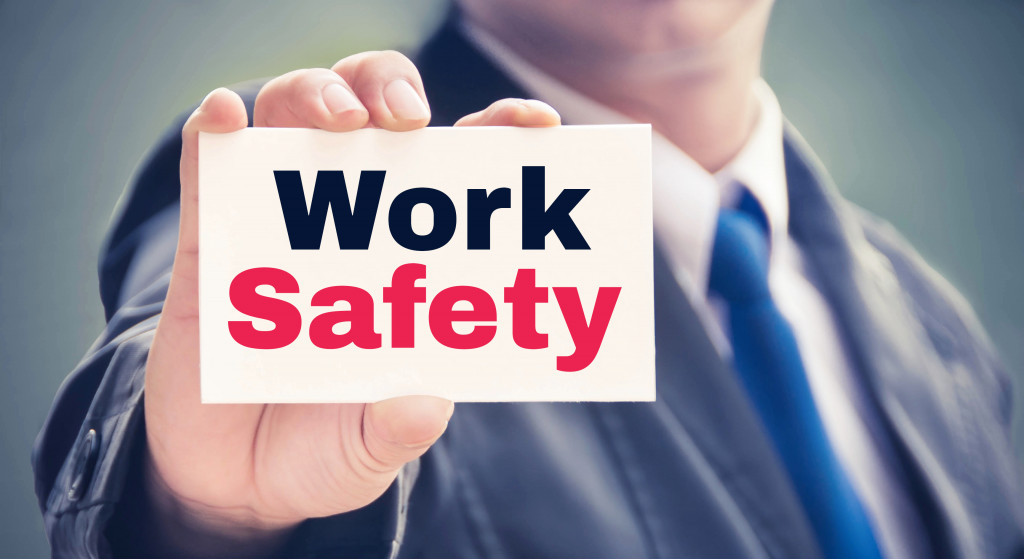No one wants to be injured at work. Unfortunately, workplace injuries are all too common. In fact, according to the Bureau of Labor Statistics, there were more than three million workplace injuries and illnesses reported in 2016. That’s a lot of people who were hurt while doing their job! Promoting workplace safety is essential for creating a safe work environment. Therefore, it is something that all employers should prioritize.
What Is Workplace Safety?
Workplace safety is the promotion of safe workplace practices. It includes ensuring that employees have the proper training, equipment, and resources they need to stay safe on the job. It also involves creating a culture of safety at work, where everyone is responsible for following safety protocols and reporting any hazards.
Why Is Workplace Safety Important?
There are many reasons why workplace safety is important. First and foremost, it’s essential for protecting employees’ health and well-being. Nobody wants to get hurt at work, but unfortunately, accidents do happen. By promoting workplace safety, employers can help reduce the risk of workplace injuries and illnesses. Moreover, workplace safety is good for business! A safe workplace is a productive workplace. When employees feel safe at work, they’re more likely to be engaged in their jobs and less likely to call in sick.
Workplace safety is also important for compliance reasons. Many businesses are required by law to maintain a safe workplace, and failure to do so can result in hefty fines. Plus, customers are more likely to do business with companies that they perceive to be safe and responsible.
These days, most employees are filing for Social Security Disability Claims. This is to guarantee that even if they get injured on the job, they will have some income to help support themselves and their families.

How To Promote Workplace Safety
There are plenty of ways for employers to promote workplace safety. Some of these ways include:
Educating employees on safety procedures
One of the first things that employers should do is educate their employees on safety procedures. Employees should be aware of the potential hazards in their workplace and how to avoid them. This way, they can stay safe and avoid accidents.
Enforcing safety rules
Another way to promote workplace safety is by enforcing safety rules. Employees should be aware of the consequences of not following safety procedures. This will help them take workplace safety seriously and follow the rules to avoid accidents.
Providing safety equipment
Employers should also provide their employees with the proper safety equipment. This way, they can protect themselves from potential hazards in the workplace. Examples of safety equipment include gloves, masks, and safety glasses.
Monitoring workplace conditions
Employers should monitor workplace conditions on a regular basis. This way, they can identify potential hazards and take steps to mitigate them. For instance, they can conduct regular inspections and make sure that all workplace equipment is in good condition.
Creating a culture of workplace safety
Employers should also create a culture of workplace safety in their organizations. This can be done by promoting workplace safety initiatives and encouraging employees to report any unsafe conditions. Additionally, employers should provide employees with training on how to stay safe in the workplace.
Incentivizing safe behavior
Employers can incentivize safe behavior by offering rewards for employees who follow safety procedures. This way, employees will be more likely to follow workplace safety rules.
Conducting regular safety audits
Safety audits are another way to promote workplace safety. These audits can help identify any potential hazards in the workplace and help employers develop plans to address them. Safety audits should be conducted on a regular basis to ensure that the workplace remains safe.
Creating a workplace safety committee
Another way to promote workplace safety is to create a workplace safety committee. This committee can be responsible for developing and implementing workplace safety policies. The workplace safety committee can also conduct regular safety audits and provide employees with training on how to stay safe in the workplace.
Encouraging employees to report unsafe conditions
Employees need to report any unsafe conditions in the workplace so that they can be addressed. Unsafe conditions can include anything from slippery floors to exposed electrical wiring. Employees should feel comfortable reporting these conditions to their supervisor or the workplace safety committee.
While workplace safety is the responsibility of every employee, it is ultimately up to the employer to create a safe work environment. By taking steps to promote workplace safety, employers can help protect their employees from potential harm. In turn, this can lead to a more productive and efficient workforce.
The bottom line is that workplace safety is important for both employers and employees. If employers fail to promote a safe work environment, they could be held liable for any injuries that occur. On the other hand, employees who are aware of potential hazards can help to prevent accidents from happening in the first place.
